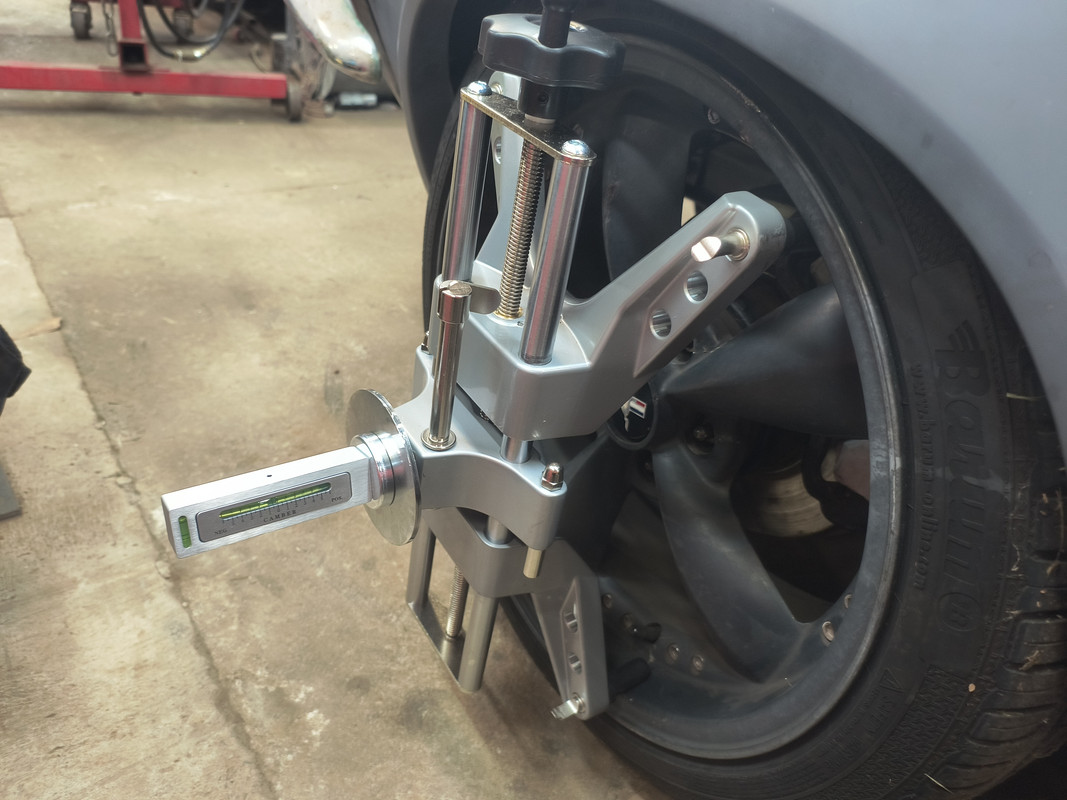Doing an alignment on a car can be as easy or hard as you want. Way too much to get into here. You can use a bubble level and do the trig to get camber and caster angles. You can measure from a circle marked in the tire to get toe. Or you can get a fully computerized Hunter rack that's well into the 6 figures.
Some basics apply to all approaches. The car has to be level. Like really level. Not your garage floor. It's not level. Setup shops use poured self leveling epoxy setup beds to get things level. And this matters. At the very least you need to do something like use vinyl flooring squares to get four level pads. The other thing is the car needs to be settled before any measurement. Again, lots of ways to do this from ball bearing setup pads to trash bags to simply rolling the car the circumference of the tire.
Asking what tools do you need to do an alignment is like asking what tools do you need to build an engine. You can assemble an engine with a $50 Horror Fraught toolkit. Or you can buy a set of CNC blueprinting machines. And FWIW, most F1 teams still use string jigs to do setups!
Here is my car on a set of setup stands I made when I was racing. The string jig I use isn't installed yet in this pic. But I made a version of the Smart Strings setup. And I use a Longacre digital camber caster jig (as well as a lot of other tooling that only applies to race cars - scales - bump steer gauges, etc).
NEW for 2025 - All SmartString support tubes are now made using high strength 304 Stainless Steel. Lifetime corrosion resistance guarantee. Fast and simple to use. If you can read a ruler, you can align your car Universal, three-plane telescoping design easily attaches to nearly any car or truck...

smartracingproducts.com
<p>Here's a super accurate digital caster / camber gauge that reads to .1º (1/10º) camber and to .1º caster as high as needed, and at a pric...

www.longacreracing.com
The kit linked to above is just a set of $75 toe plates and a $20 inclinometer. Most racers would see toe plates as a quick and dirty at the track way to set toe. Useful,but not the right way.








